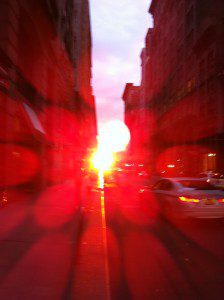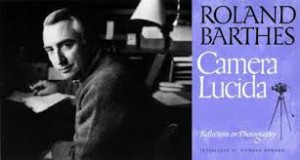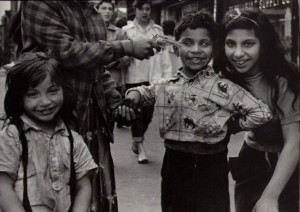I took this photo on Saturday,it’s located in flatbush section of Brooklyn by Empire and Bedford. Ebbets Field was a Major League Baseball stadium, It was demolish in 1960 and replace by apartment buildings. I took a photo of this building because after the stadium got demolish, the people of bough it honored leaving the name Ebbets Filed.
Category: Uncategorized (Page 5 of 6)
I took this picture on Friday October 14,2016 as I sat at my aunts dining room table. This is an art photo showing that even when wood is old and worn out it can still look amazing. The dominant impression is satisfaction I think this is the dominat impression because a person who buys good would be able to know that even after years of having it , it will still look nice.
I took this photo of Rockaway Beach on tuesday, as I was going in the A train to my cousin’s house with my sister and my niece. It shows elements of water and sky. What is so interesting for me is how the water looks and you can see a little bit of the lens flare. This photo looks more a documentary photo rather than an art photo.
Hi Class,
For the 17th:
Read Parla, Anastasio (both in Dwell), and Teju Cole’s article in Readings menu tab.
Then post a photo (your own), give it a title, and use three of our photo terms to describe it. Chose the terms that make sense for the image. When you post your photo, try to make it about the size of my image below:
Manhattan Stonehenge, 2012.
I took this photo in 2012 as I was crossing 14th street in Manhattan on my way to play ping pong with my friend Tom. What is so interesting to me is that the lens flare makes this into an art photo–rather than a documentary photo…..
Homework for Thursday, Oct 6th:
- Print out and read over Essay 2 details
- Print out and read John Berger’s essay: “Understanding a Photograph”
- Prepare for Thursday’s Quiz 2 on Sontag and Berger
- **Take 4 photos: 2 macro and 2 your choice
Depth of Field:
https://en.wikipedia.org/wiki/Depth_of_field
More on taking better photos with your cell phone:
Hi Class…lot’s of information today!
Homework for next Wednesday!!!: Read Sontag and write summary=Journal 4.
VIDEO CLIPS:
1. How does a digital camera work?:
https://www.youtube.com/watch?v=Ic0czeUJrGE
2. How to develop film using coffee and vitamin C:
https://www.youtube.com/watch?v=zYjOqcbBEco
3. A Darkroom in Use:
https://www.youtube.com/watch?v=nue495wxlXo
4. Five tips for taking your own digital photographs:
https://www.youtube.com/watch?v=YroMyQJ-GMQ
——————–
Joining Openlab, Posting to Openlab, and Dominant Impression
Here is an example of a picture that I took and my description:
Manhattan-Stonehenge, 2011, Sean Scanlan
I took this picture in the early spring of 2011. The shot is of the sun as it is framed by skyscrapers on either side of E. 21st St., looking West, of course. The sun is setting and seems perfectly centered by the “cliffs” or buildings. I was walking with my friend, Tom, and on our way to play ping-pong at a place called Spin, which is a few blocks north of Union Square. What is so interesting about the picture is that the lens created the effect of all the red circles, I never saw them until after clicking the shutter. I did not use any filters on this shot. The red is overwhelming, but I can still make out the street scene. At first, I did not like the white car on the right side, but after further reflection, I liked how it adds perspective and the illusion of speed. Lastly, the lens also created the effect of a bright slash that goes through the street, straight down. I like that “sword” as it bisects the frame.
————-
How to Sign up, Join, and post a photo:
STEP 1: Here is a link to help you set up an account on Openlab.
https://openlab.citytech.cuny.edu/blog/help/signing-up-on-the-openlab/
STEP 2: Here is a link that will help you join my class.
https://openlab.citytech.cuny.edu/blog/help/logging-in-to-the-openlab/
The shortcut to step 2 is that you should click on the menu tab labeled “Course Profile” on this website, then go to the right side and click join now.
STEP 3: Posting a photo.
https://openlab.citytech.cuny.edu/blog/help/adding-images-to-your-site/
To add your description, just type inside the box underneath the image that you have posted. Be sure to click the blue “Update” button on the right side of the page.
If you have any questions, please email me.
Best,
Prof. Scanlan
ps. Description: An Example
Here’s a written description of a store:
“It was a narrow room, with a rather high ceiling, and crowded from floor to ceiling with goodies. There were rows and rows of hams and sausages of all shapes and colors–white, yellow, red, and black; fat and lean and round and long–rows of canned preserves, cocoa and tea, bright translucent glass bottles of honey, marmalade, and jam; round bottles and slender bottles, filled with liqueurs and punch–all these things crowded every inch of the shelves from top to bottom. “
-Thomas Mann
What is the dominant impression of this scene?
Hi Class,
Essay 2 is about taking photos, reading them, and writing about them.
These questions will help us as we move toward Essay 2:
1. What is a photograph? What is the history of photography?
http://en.wikipedia.org/wiki/Photography
2. Why do we take, keep, share, and discard photographs?
3. How should we make sense of photographs?
The French sociologist and critic Roland Barthes wrote about photography, and he came up with two useful terms for studying photographs.
1. Studium: The studium of a photograph is the public and historical background of a photo. The studium is the photo’s context and its general understanding which includes the precise time and place and weather. The studium of a photo must be visible, and it is the cultural reading of faces, gestures, buildings, clothing, and actions within a photo.
2. Punctum: The punctum of a photograph is highly individual, not public. The punctum pierces the viewer in a particular, private way. The punctum, which must be visible, pierces the viewer like a arrow, raising certain individual memories and consciousnesses to the surface. The punctum bruises me but not you. The punctum is about loving, while the studium is about liking.
*These definitions are from Barthes’ Camera Lucida (New York: Hill and Wang, 1981)
Barthes’ example of punctum:
“What I stubbornly see are one boy’s bad teeth…”
Hi Class,
Essay 1 is due on Monday morning at 9:00 am in our lab.
In your paper folder (with your name on it) please include:
-Final Draft
-Prior Drafts
-Peer Reviews (2)
-Assignment Details
Proofreading Advice for Monday’s Due Date:
- Read over your own draft several times.
- Read your own draft out loud.
- Have a friend read your draft. Perhaps exchange essays.
- Read backwards.
Email any questions,
Best wishes,
Prof. Scanlan










